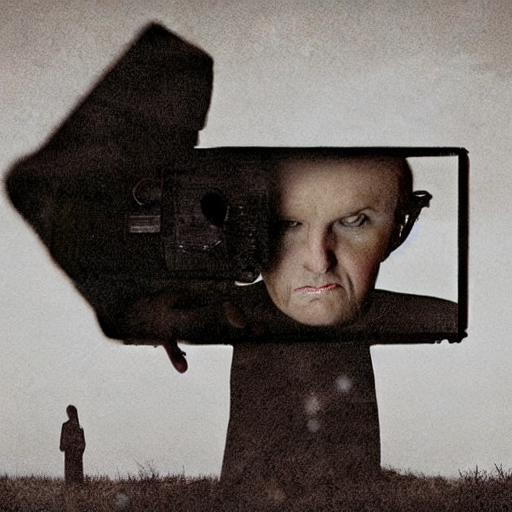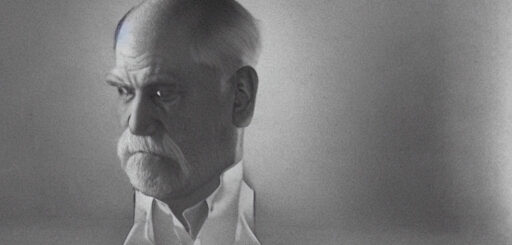Inland Empire: David Lynch’s Surrealist Journey into the Depths of the Human Psyche
David Lynch’s 2006 film, “Inland Empire,” is a mind-bending, three-hour odyssey that takes viewers on a journey into the subconscious mind. With its non-linear narrative, disjointed dialogue, and surreal imagery, the film defies conventional storytelling and challenges viewers to interpret its meaning in their own way. Set in Los Angeles, the film follows actress Nikki Grace (played by Laura Dern) as she becomes consumed by the character she is playing in a film. As Nikki’s mental state begins to unravel, so too does the film’s sense of reality. Lynch’s signature use of dream logic and obscure symbolism create a hypnotic and unsettling atmosphere, leaving audiences feeling as though they have been transported to an alternate dimension. In this article, we will delve into the themes and motifs that make “Inland Empire” a mesmerising exploration of the human psyche and a masterpiece of surrealist cinema.

Visuals and Music
The unsettling visuals and music in “Inland Empire” play a crucial role in creating a sense of terror and disorientation. The film’s use of dark, muted colors and shadowy lighting creates an oppressive atmosphere that feels like a physical weight on the viewer’s shoulders. Lynch’s expert use of framing and camera movement adds to this feeling, as the camera often lingers on objects or people in a way that feels eerie and uncomfortable. In addition, the surreal, dream-like imagery that appears throughout the film, such as the recurring motif of a woman with a grotesque, distorted face, adds to the sense of unease and horror. These elements combine to create a visual landscape that is both beautiful and terrifying, drawing the viewer further into the film’s nightmare world.
The music in “Inland Empire” is just as haunting and unsettling as the film’s visuals. Lynch’s use of sound is masterful, as he employs eerie, discordant music and unsettling sound effects to create a sense of disorientation and anxiety. The film’s score, composed by Lynch and longtime collaborator Angelo Badalamenti, is a mix of orchestral music, jazz, and ambient soundscapes that perfectly capture the film’s dark and surreal atmosphere. In addition, Lynch’s use of popular music, such as the Polish folk song “Locus Iste” and Nina Simone’s “Sinnerman,” adds a sense of irony and subversion to the film’s horror. Overall, the combination of Lynch’s visuals and music in “Inland Empire” create a truly terrifying and unforgettable cinematic experience.
Nightmarish Scenes
There are numerous moments in “Inland Empire” where the lines between reality and imagination become blurred, creating a sense of unease that is reminiscent of a nightmare. One such scene is when Nikki first meets her co-star, Devon Berk (played by Justin Theroux), in a dingy alleyway. The dimly lit, claustrophobic setting and the unsettling way that Devon leers at Nikki creates a sense of dread that something terrible is about to happen. As the scene unfolds, the dialogue becomes more and more disjointed, as if the characters are struggling to communicate with each other. This sense of disconnect only adds to the feeling of being trapped in a nightmare.
Another haunting moment in the film is when Nikki enters a mysterious, red-curtained room and encounters a group of prostitutes who are performing a grotesque dance. The camera lingers on their twisted movements and distorted faces, creating an atmosphere of terror that is reminiscent of a horror film. As Nikki watches the performance, she begins to see flashes of her own face in the mirror, as if her own identity is being consumed by the nightmare that surrounds her. The scene culminates in a moment of intense violence, which is both shocking and cathartic, leaving the viewer on edge and unsure of what will happen next.

Conclusion
In conclusion, David Lynch’s “Inland Empire” is a film that defies easy categorization, weaving together elements of horror, drama, and surrealist art to create a visceral and unforgettable experience. The film’s non-linear narrative, surreal imagery, and expert use of sound and music create a dreamlike atmosphere that feels both beautiful and terrifying. Throughout the film, Lynch explores the deepest, darkest corners of the human psyche, delving into themes such as identity, memory, and the nature of reality itself. By blurring the lines between dream and reality, Lynch invites the viewer to confront their own fears and anxieties in a way that is both cathartic and unsettling.
Ultimately, “Inland Empire” is a testament to the power of cinema to challenge and provoke, to make us think and feel in ways we never thought possible. While the film can be a challenging and at times even disturbing experience, it is one that rewards those who are willing to embrace its darkness and complexity. For those who are brave enough to take the journey, “Inland Empire” is a film that will stay with them long after the credits have rolled, a fever dream that will haunt their dreams and their waking thoughts for years to come.



